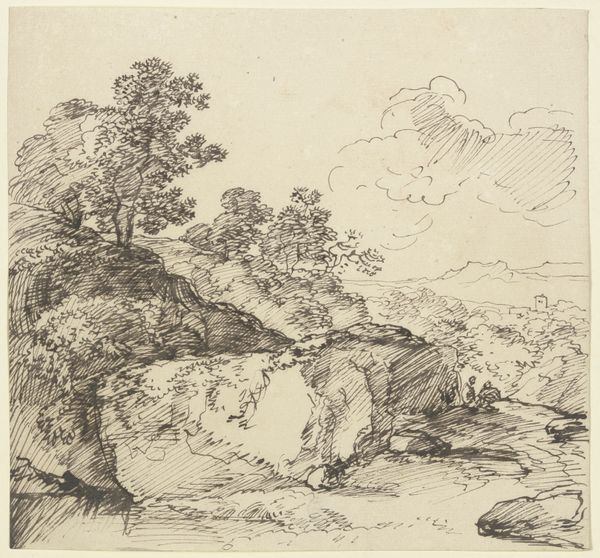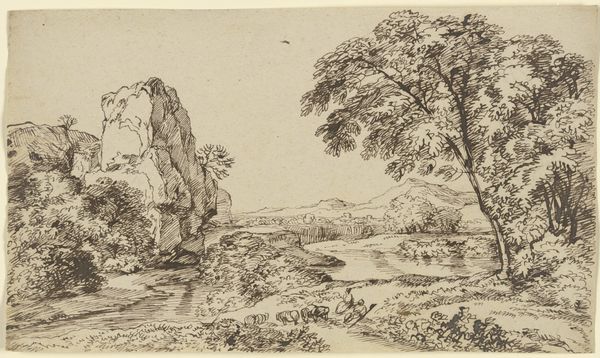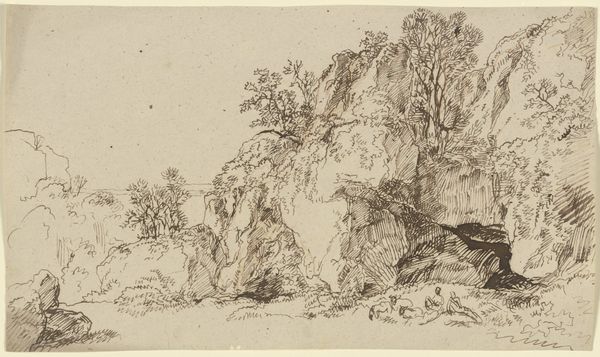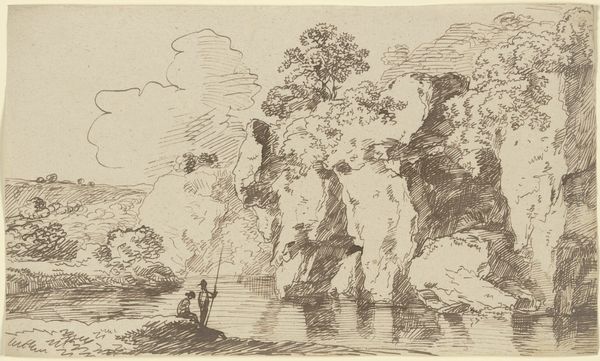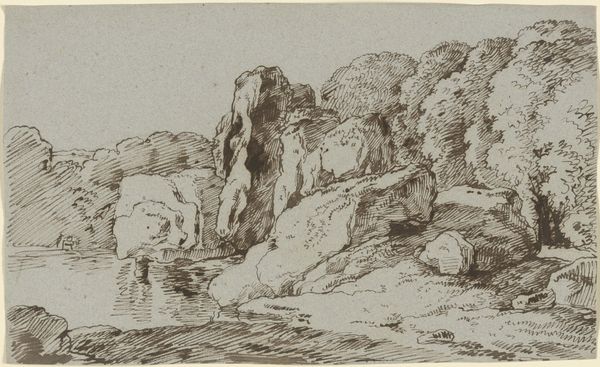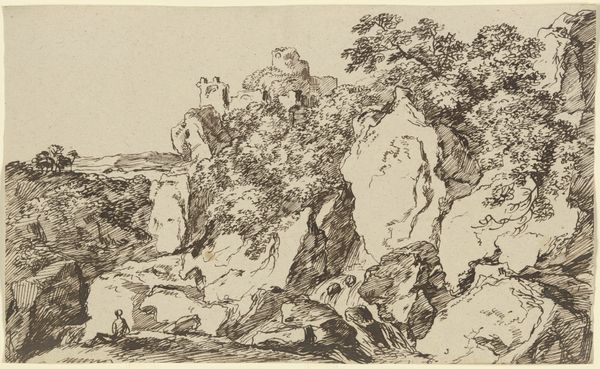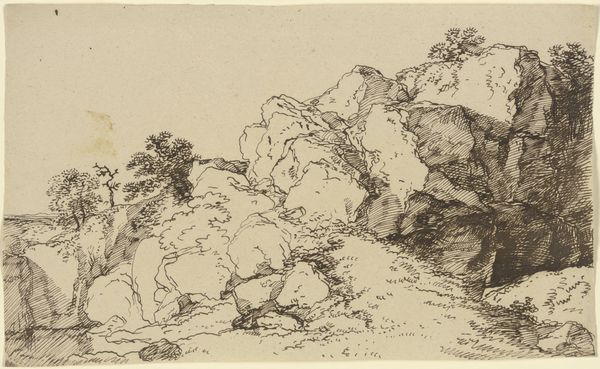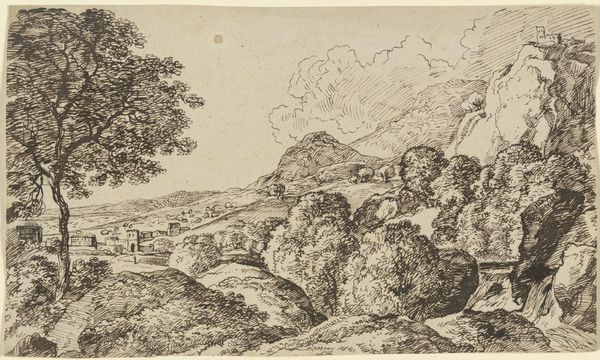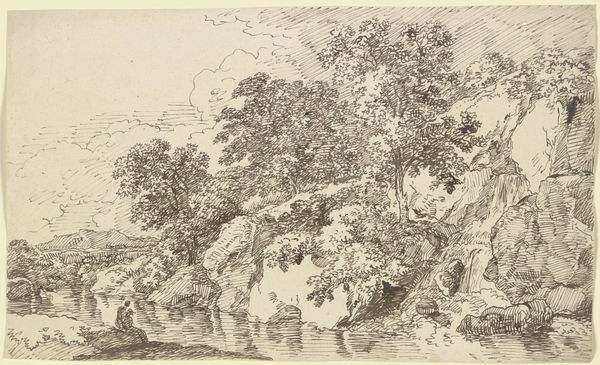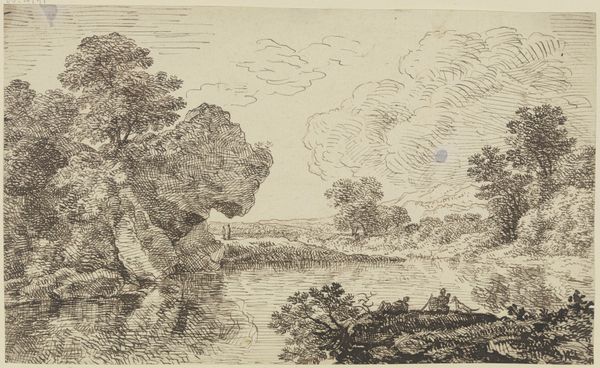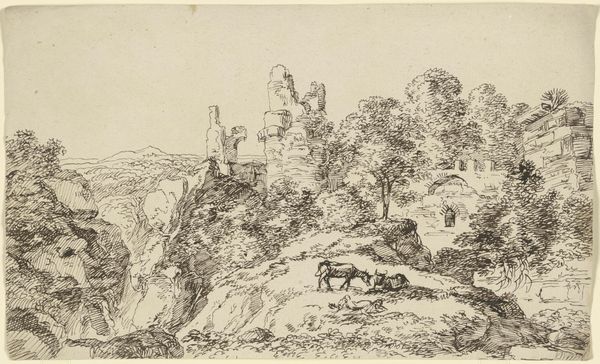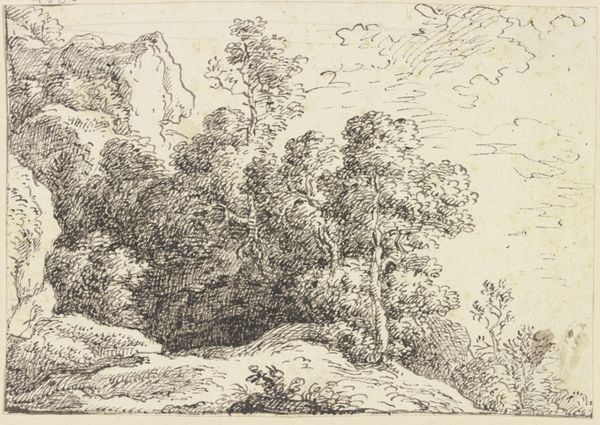
drawing, ink, chalk, pen
#
drawing
#
ink drawing
#
pen sketch
#
landscape
#
ink
#
chalk
#
15_18th-century
#
pen
Copyright: Public Domain
Editor: So, here we have "Rocky Landscape with Castle Ruins" by Franz Kobell, rendered with pen, ink, and chalk. I’m immediately drawn to how small the ruin is in the composition. It gives a sense of...longing for something lost. What do you see in this piece, particularly when thinking about historical context and symbolism? Curator: I'm struck by that very point – the diminutive ruin. It speaks volumes, doesn't it? A ruin is potent iconography; a symbol of mortality, certainly, and the transient nature of power and human endeavor. What memories, what power did this castle once hold? Now observe its placement amidst this wild, almost aggressively natural landscape. Do you see how nature is ascendant? Editor: Yes, definitely. The rocks and vegetation dwarf the castle, like nature is reclaiming what was once dominated by humans. Is it perhaps a reflection on changing social orders, or a critique of power? Curator: Perhaps both, or neither. Kobell invites us to ponder these ideas without explicitly dictating a message. Landscape, after all, can serve as a stage for our inner dramas. Consider the figures atop the prominent boulder on the left: are they observers, commentators on the scene before them? What psychological weight do they carry? What are they thinking? They appear like spirits presiding over a memory. Editor: That's a beautiful interpretation! It transforms the whole scene from a simple landscape to something deeply philosophical, almost a memento mori. Curator: Precisely. Landscape is rarely *just* landscape. It echoes within us, resonates with our understanding of time, loss, and the enduring power of the natural world. The ruin is simply the hook. What we do with it is down to us. Editor: This has given me a whole new way to approach landscape art! It’s not just pretty scenery; it’s a mirror reflecting our own humanity and our place in history.
Comments
No comments
Be the first to comment and join the conversation on the ultimate creative platform.

